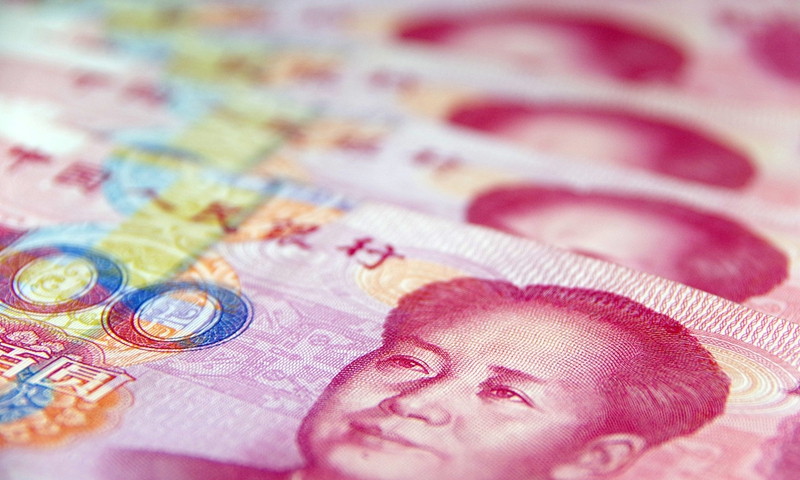THERE seems to be growing expectations among financial analysts that the US dollar strength will dissipate in the medium term as the global economy recovers from the fallout of the Covid-19 pandemic.
According to an analyst survey compiled by Bloomberg, the ICE US Dollar Index, which is a gauge of the greenback’s strength, could weaken about 2% to 94.1 points by the second quarter of next year. The index is currently trading around the 96 level.
Bloomberg also notes that the Deutsche Bank’s Trade-Weighted Dollar Index, which is a gauge of the currency against the United States’ most-important trading partners, has fallen to test the trend line in place since 2011. The report says a breach of that point would be an important signal for dollar bears.
This month alone the index has dropped more than 1% amid the weakening demand for safe-haven assets such as US Treasury bonds, an ongoing rally in risk assets such as equities and a shift in sentiment towards other currencies such as the euro and yuan.
Standard Chartered Bank (StanChart), at a virtual press conference over the week in conjunction with the release of its Global Market Outlook for the second half of 2020, asserts its bearish view on the US dollar over the medium term.
The multinational financial group points to massive US dollar liquidity provision and real interest rate differentials between the United States and other countries as among the factors that should facilitate a reversal in the US dollar decade-long bullish trend.
“The longer-term cyclical US dollar uptrend that began in 2008 has likely peaked, with its downtrend expected to gain momentum over the coming year as the global economy rebounds and US exceptionalism fades, ” StanChart says.
“We expect some bumps on the road for the US dollar downtrend, particularly in the near term. These are likely to be driven by US political and policy uncertainty ahead of the November election, broader geopolitical risks and the evolution of the pandemic, ” it adds.
StanChart says it considers such events as opportunities for medium-term investors to sell US dollar rallies.
“We expect a 5%-7% US dollar decline over the next 12 months, with the euro, Australian dollar and British pound being the primary beneficiaries. There may be a more difficult passage for emerging-market currencies that are sensitive to an uneven global recovery and idiosyncratic risks, ” it says.
Viable alternative
Similarly holding a bearish view on the US dollar, Nomura says it expects the greenback to follow a path of reduced dominance and weaken over the long term.
In its recently released report titled “The World After Covid-19”, the multinational brokerage projects the US Dollar Index (DXY) to see a sharp depreciation of up to 20% in the coming years.
“Macro drivers include the significant deterioration of the US twin deficits, scope for European Union fiscal coordination, the undermining of the US dollar by US President Donald Trump through verbal and potential policy actions, and substantial foreign exchange (FX) overvaluation, ” Nomura says of what will lead to the weakness of the greenback.
“However, there are other developments that could reduce the role of the US dollar, some of which are structural, such as deglobalisation, yuan internationalisation, digital FX, Bitcoin and Facebook Libra, ” it adds.
Nomura also points out that the end of the US dollar’s role as the world’s reserve currency has long been foretold, but it has yet to materialise due to the lack of a viable alternative. For instance, it notes, the greenback accounted for 88% of all global FX trades last year, up from 85% in 2010.
Nevertheless, Nomura says, the process of creating a viable alternative is gathering momentum, thanks to innovations from other global central banks and private financial institutions.
“Combined with worsening fundamentals for the US dollar, the risk over the coming years is not only one of a reduced role, but also what could be a relatively sharp DXY depreciation, possibly 20%, ” it says.
According to Nomura, the US dollar is overvalued by an average of 17.5%. The greenback on the real effective exchange rate model is overvalued by about 22%, while on the fundamental equilibrium exchange rate model, it is currently overvalued by about 15%.
Positive for emerging market
A weakening US dollar, Nomura says, will provide some breathing space for emerging-market currencies, especially those of countries with sizeable current account deficits. This is because they tend to be more vulnerable to capital outflows and hence, FX volatility.
The brokerage expects in a world of low interest rates in developed markets and ample liquidity due to global central bank easing, investors will be on the lookout for economies that offer higher risk-adjusted returns.
“Emerging markets, which offer a relative growth advantage, could benefit from such easy developed-market policies, by tapping low cost funds for high-return investment projects, ” Nomura says.
StanChart is positive on the FX of Asian emerging markets as US dollar weakness feeds through.
“Gradual emerging market FX appreciation should continue amid a recovery in global growth, easing restrictions and a broadly weaker US dollar, ” it says.
Nevertheless, it reckons a pick-up in US-China trade tensions and an uneven global economic rebound could pose a risk to its optimistic view on emerging-market FX.
Gradual ringgit recovery
On the ringgit, StanChart says further policy rate cuts by Bank Negara could potentially weigh on the performance of the Malaysian note. It points out that the ringgit remains relatively more exposed to external financing shocks.
At present, StanChart expects Bank Negara to keep the overnight policy rate at its current level through 2020. The central bank early this month cut the benchmark interest rate for the fourth time this year by another 25 basis points to 1.75%, the lowest since 2004.
Meanwhile, the longer-term valuations for US dollar to the ringgit remain attractive, StanChart says, adding that this should limit a sharp sell-off in the ringgit, while a stronger-than-expected rebound in commodity prices will bode well for the Malaysian currency.
Year-to-date, the ringgit is among the worst-performing currencies in Asia.
It has weakened by around 4% against the US dollar since the start of the year due to a number of factors, including political uncertainties following the fall of the Pakatan Harapan-led government, and risk aversion amid geopolitical tensions and the Covid-19 pandemic.
The ringgit is currently trading around 4.27 against the US dollar, compared to around 4.09 to the greenback at the start of 2020.
According to Hong Leong Investment Bank (HLIB), the still positive yield differentials between Malaysia and the United States should be supportive of the ringgit over the medium term. A potential return to emerging-market assets as risk appetite improves should also support the local note, the brokerage says.
HLIB projects a gradual improvement in the ringgit, which it expects to end this year at 4.20 against the US dollar, before improving further to 4.15 against the greenback by end-June 2021.
Source link
Read more:
U.S. dollar slips amid strength in euro
Related posts:

QUESTION: What do Wirecard , Luckin and
Hin Leong have in common, although all three are based thousands of
miles apart in Munich, B..


















